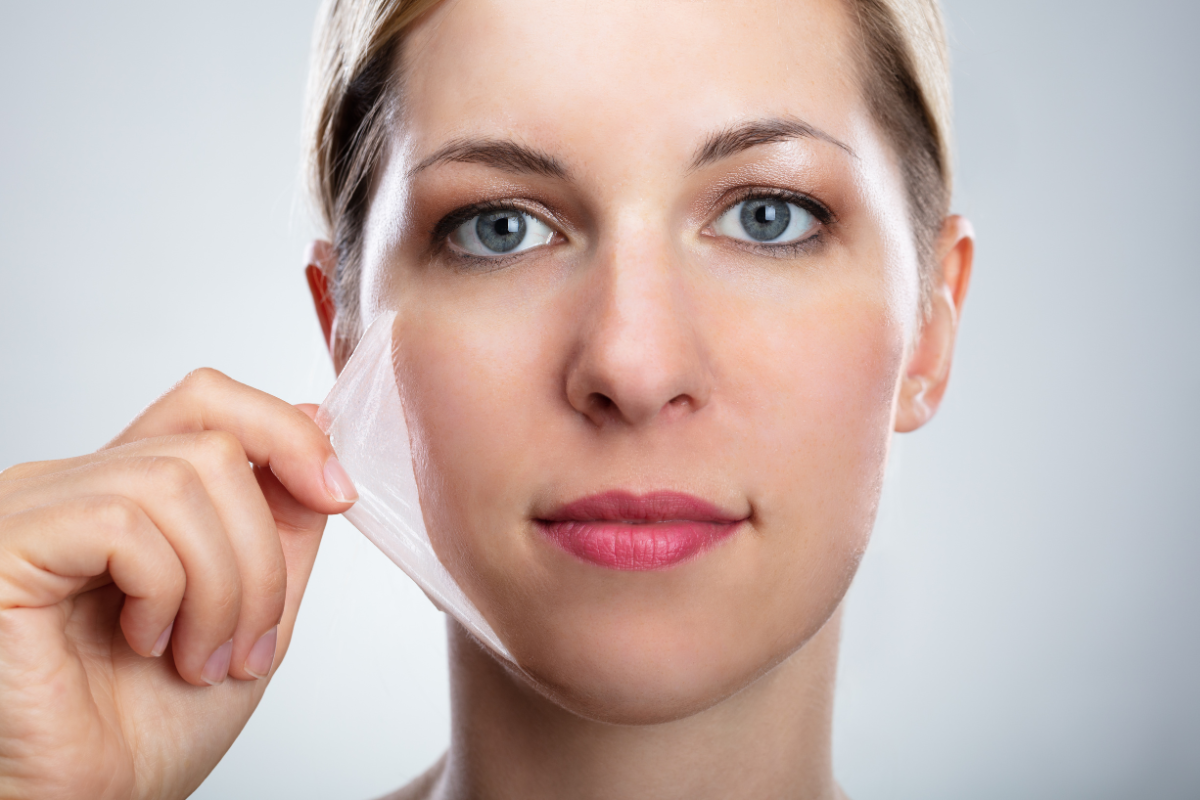
Chemical Peels
Chemical peel is a treatment in which a safe acid solution is applied to the skin to remove the outermost layer for skin rejuvenation.
Chemical Peel is use to treat
- Wrinkles and fine lines
- Sun damage
- Acne scars
- Hyperpigmentation
- Scars
- Melasma
- Uneven skin tone or redness
How are chemical peels performed?
Chemical peels are usually performed in a clinic setting. Before the procedure, your hair will be secured away from your face, and your skin will be thoroughly cleansed. Protective measures, such as gauze, may be applied to shield your eyes.
Chemical solution—glycolic or salicylic acid—is applied to the treatment area using a cotton ball, gauze, or brush. As the solution works, the skin may begin to whiten, and you might feel a mild stinging or tingling sensation. Once the treatment is completed, the solution will either be removed or neutralised to stop the reaction.
3-Step Chemical Peel Process at Niks Maple Clinic
Before a chemical peel, you will have a thorough consultation with our doctor to assess your skin condition and understand your treatment goals. Based on this evaluation, our doctor will recommend the most suitable type of peel for you. You may also be advised to pause certain skincare products or treatments to ensure the peel’s safety and effectiveness.
The chemical peel process begins with a thorough cleansing of the skin to remove dirt, oil, and impurities. This essential step ensures that the chemical solution can penetrate the skin effectively. Once the skin is prepared, a customised chemical solution—selected according to your skin type and concerns—is carefully applied.
The solution is left on the skin for a controlled period, depending on the type and strength of the peel. During this time, you may feel mild tingling, warmth, or a slight stinging sensation. These responses are normal and indicate that the peel is active. Once the appropriate time has passed, the solution is neutralised to stop the chemical reaction and prevent overexposure. The skin is then gently cleansed again, completing the treatment process.
Proper post-treatment care is essential to achieving the best results and minimise side effects. After a chemical peel, your skin may feel sensitive, appear red, or show mild swelling. To support healing and enhance the benefits of your treatment, follow these key guidelines:
Protect from Sun Exposure: Avoid direct sunlight and tanning beds during the healing phase. Unprotected sun exposure can cause irritation and pigmentation changes.
Apply Sunscreen Daily: Use a broad-spectrum sunscreen with SPF 30 or higher to shield your new skin from UV damage. This helps prevent hyperpigmentation and preserves your results.
Choose Gentle Skincare: Stick to mild, fragrance-free products made for sensitive skin. Avoid harsh ingredients or exfoliants that could irritate the treated area.
Do Not Pick or Scratch: Resist the urge to touch, pick, or scratch peeling skin, as this may lead to scarring or infection.
Keep Skin Hydrated: Apply a suitable post-peel moisturiser regularly to maintain hydration, support healing, and keep the skin smooth.
Attend Follow-Up Visits: Keep your follow-up appointments so your doctor can monitor progress and adjust your skincare routine if needed.
FAQ
What is a chemical peel used for?
- It corrects the dull, sallow look of the skin, improving clarity and brightness, which results in a more evenly toned complexion. Although no treatment can claim to truly shrink pores, this will unclog pores and make them appear smaller.
- It rejuvenates skin by restoring texture and vitality to the skin surface.
- It increases the water-trapping elements in the dermis of the skin. This replenishes the skin’s water content, increases skin hydration and smooths the appearance of fine lines and wrinkles.
- It promotes acceleration of cell rejuvenation,brightens the complexion, aids anti-aging and lightens hyper-pigmentation. It also provides better penetration of the daily skin care products to achieve better results.
How is a chemical peel performed?
An evaluation is first conducted by the doctor to decide on the type of solution to be used. The skin is cleansed before the solution is applied to exfoliate the skin. You may feel a “tingling” sensation for the first few minutes. Chemical peels are recommended to be done in a series of sessions at an interval of about 2 to 4 weeks, depending on the patient’s condition. Patient may choose to continue maintenance treatment every 4 to 8 weeks for best results.
What can I expect after the treatment?
Within the next few days, the face may be red or feels dry. You may not see any obvious skin peeling. However, the skin will feel smoother by one week.
How should I take care of my skin after chemical peel?
- The skin should be cleansed gently and appropriate treatment products should be used with Niks Ultrafine Soothing Cleanser
- Do not scratch or try peeling off any skin flaks.
- Use a sunblock and avoid the sun whenever possible.
What are the complications with a chemical peel?
We use glycolic and salicylic acids for our treatment, which are safe. There will hardly be any complication besides the occasional slight burnt on broken or dry skin which will recover in a week’s time.
What are the limitations of a chemical peel?
Chemical peels may not improve flushing of the skin, chronic old scars, deep wrinkles or sagging skin within a short period of time. Laser procedures of other forms of surgery may be needed for such conditions.
Make An Appointment
Contact us today (Tel 62359428, WhatsApp 81682638 or via your MyNiks app) to schedule your consultation and discover how we can help you achieve the clear, healthy skin you deserve.
